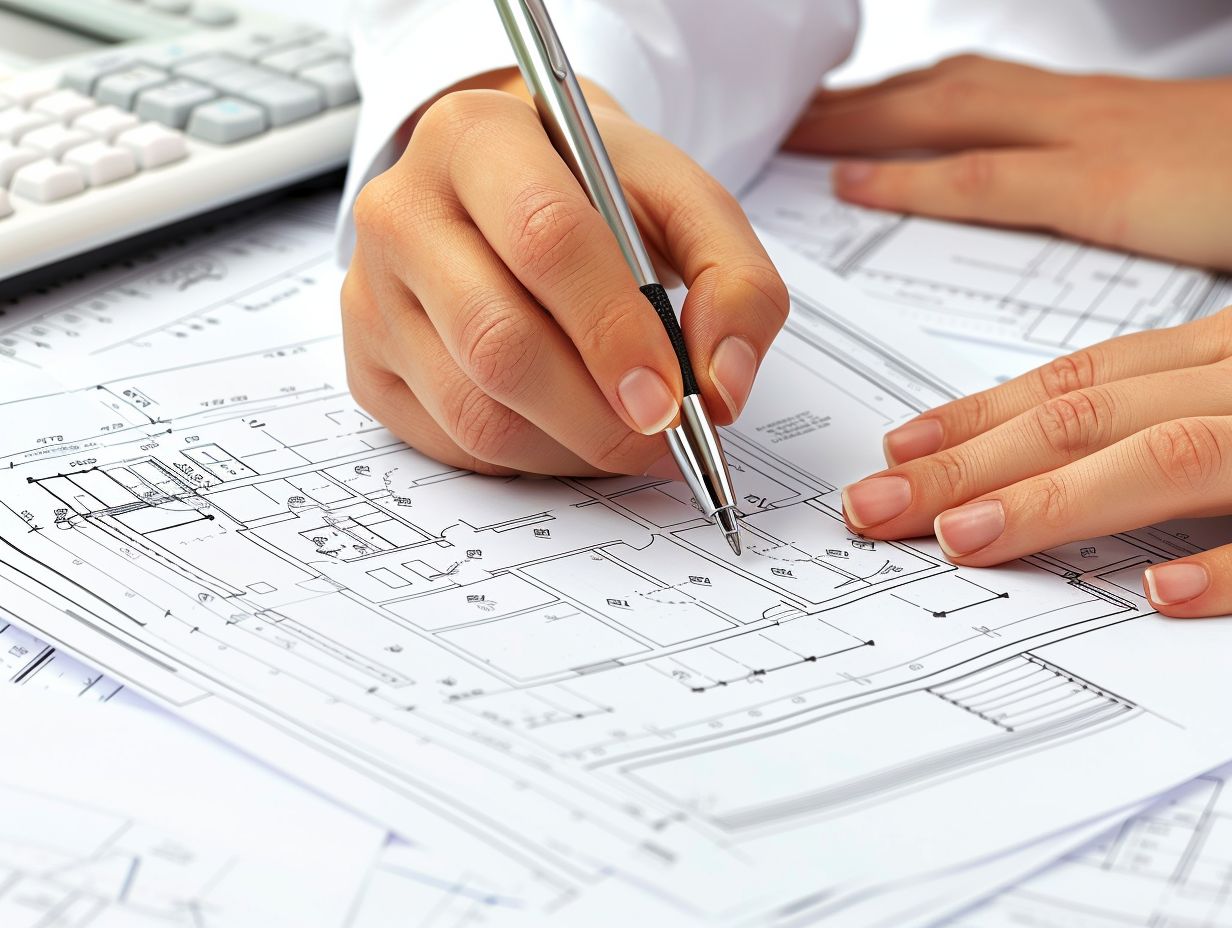
Structural Engineering for Modern HVAC Integration in SF
Structural engineering plays a crucial role in shaping the modern landscape of San Francisco, particularly in the integration of HVAC systems into architectural design. This article will explore the intersection of structural engineering and HVAC integration, shedding light on the benefits, considerations, and challenges associated with this symbiotic relationship.
We will delve into the fundamental principles of structural engineering and HVAC integration, examining how these disciplines work in harmony to optimize building performance. From navigating building codes and regulations to addressing seismic activity and environmental factors, we will uncover the key considerations that shape the structural engineering landscape in San Francisco.
We will explore how structural engineering and HVAC integration can seamlessly collaborate, emphasizing the importance of coordination in design and construction, leveraging building information modeling (BIM), and embracing sustainable design principles. We will dissect the challenges posed by limited space, historic preservation, and budget constraints when integrating HVAC systems into structural design in the vibrant city of San Francisco.
To provide real-world context, we will spotlight successful examples of HVAC integration in San Francisco, including iconic structures like the Salesforce Tower, the Moscone Center Expansion, and the Transbay Transit Center. These case studies will offer valuable insights into the practical application of structural engineering and HVAC integration, showcasing the innovative solutions that have transformed the city’s skyline.
In essence, this article will serve as a comprehensive guide to understanding the intricate relationship between structural engineering and HVAC integration in the dynamic urban environment of San Francisco. So, join us as we unravel the fascinating interplay between these disciplines, uncovering the driving forces behind the architectural marvels that define the city’s landscape.
What Is Structural Engineering?
Structural engineering is a modern discipline that encompasses the analysis, design, and construction of load-bearing structures, focusing on sustainable and innovative building design.
It plays a crucial role in ensuring that buildings comply with building regulations, are resilient to environmental factors, and achieve optimal structural performance. With the increasing emphasis on sustainable design, structural engineers are incorporating innovative construction materials such as carbon fiber, bamboo, and engineered timber to minimize environmental impact while maintaining structural integrity.
Structural analysis techniques like finite element method and computer-aided design are utilized to optimize the efficiency and safety of building structures.
What Is HVAC Integration?
HVAC integration involves the seamless incorporation of mechanical systems, including air conditioning, heating, ventilation, and ductwork, to optimize energy efficiency and conservation within a building’s envelope.
This type of integration is crucial for effective management of indoor climate control, as it ensures that these systems work harmoniously, utilizing resources in the most efficient manner possible. By integrating HVAC systems with the building envelope, it becomes possible to minimize energy wastage and maintain a comfortable indoor environment. This has significant implications for sustainable building practices and the reduction of environmental impact, as well as for the long-term cost savings associated with efficient energy use.
What Are the Benefits of Integrating HVAC Systems into Structural Design?
Integrating HVAC systems into structural design offers numerous benefits, including enhanced energy efficiency, improved thermal comfort, superior indoor air quality, and alignment with green building standards and sustainable design principles.
This integration not only optimizes building performance by regulating temperature and air distribution but also contributes to reducing energy consumption and costs. By incorporating renewable energy sources, such as solar or geothermal systems, into HVAC designs, buildings can further decrease their carbon footprint and reliance on traditional energy sources.
The strategic incorporation of HVAC systems from the early stages of architectural planning allows for seamless integration, maximizing space utilization and aesthetics while promoting sustainable living environments.
What Are the Key Considerations for Structural Engineering in SF?
In San Francisco, key considerations for structural engineering encompass adherence to building codes, resilience to seismic activity, and accounting for the unique climate and environmental factors, all within the context of urban development and engineering principles.
Building codes in San Francisco play a crucial role in regulating construction standards to ensure safety and stability. The seismic resilience is paramount, as the city is located in a high-risk seismic zone, requiring engineers to design structures capable of withstanding significant ground movement. The influence of environmental factors, such as the proximity to the ocean and the risk of flooding, adds complexity to the structural design process.
Urban development also impacts structural engineering, with a focus on sustainable and innovative building solutions. Building inspection is a critical aspect to ensure compliance with regulations and safety standards.
Building Codes and Regulations
Adherence to building codes and regulations is foundational in structural engineering, guiding the design criteria, construction practices, and the implementation of cost-effective solutions for sustainable building projects.
These codes and regulations serve as essential benchmarks to ensure that the structural integrity of buildings meets safety and performance standards. By setting guidelines for materials, construction methods, and structural stability, they play a pivotal role in harmonizing the balance between safety, functionality, and aesthetics.
Incorporating design and construction practices in line with these regulations not only enhances the resilience of structures but also minimizes long-term maintenance costs and maximizes operational efficiency, ultimately contributing to the longevity and sustainability of built environments.
Seismic Activity
Seismic activity in San Francisco necessitates specialized considerations such as seismic retrofitting, innovative seismic design, and the implementation of building upgrades to enhance overall structural resilience.
This emphasis on seismic resilience directly impacts the field of structural engineering, prompting professionals to develop retrofit solutions to mitigate the impact of potential earthquakes. Retrofitting measures involve reinforcing existing structures to improve their ability to withstand seismic forces, ensuring the safety of occupants and minimizing damage. Engineers are incorporating innovative seismic design techniques into new construction projects, leveraging advanced materials and technologies to enhance the seismic performance of buildings. These efforts are crucial for building resilience and safeguarding communities against the devastating effects of seismic events.
Climate and Environmental Factors
Considerations for climate and environmental factors in San Francisco encompass the integration of energy-efficient solutions, the mitigation of environmental impact, and the utilization of advanced energy modeling to enhance urban resilience and reduce greenhouse gas emissions.
These factors play a crucial role in shaping the structural engineering practices in the city. The need for thermal insulation is paramount to ensure energy efficiency amidst varying climatic conditions. Structural designs are evolving to incorporate materials and techniques for optimal thermal performance, reducing heating and cooling energy demand. Advanced energy modeling allows engineers to simulate and analyze different design scenarios, enabling them to make informed decisions that prioritize energy efficiency and environmental sustainability.
The focus on environmental impact mitigation is driving the adoption of innovative construction methods and materials, aiming to reduce the overall carbon footprint of structures in urban environments.
How Can Structural Engineering and HVAC Integration Work Together?
The synergy between structural engineering and HVAC integration is realized through coordinated design and construction, leveraging building information modeling (BIM), and prioritizing sustainable development and energy performance.
This collaboration involves seamless project management, where structural considerations and HVAC requirements are ingeniously integrated. By harnessing the power of BIM, stakeholders are able to visualize the entire building system, optimizing space allocation and ensuring efficient placement of HVAC components. The pursuit of sustainable development and energy performance drives innovation in both fields, leading to the creation of eco-friendly and energy-efficient structures. This integrated approach not only enhances the functionality of buildings but also contributes to a greener and more sustainable built environment.
Coordination in Design and Construction
Effective coordination in design and construction involves optimizing structural engineering and HVAC integration, integrating building services, and utilizing airflow simulation to enhance urban infrastructure and building performance.
This type of coordination is crucial in achieving an efficient and sustainable urban environment. By optimizing structural engineering and HVAC integration, architects and engineers can create innovative and resource-efficient building designs. Integrating building services such as plumbing, electrical, and fire protection systems ensures seamless functionality within the structure.
Applying airflow simulation techniques further improves urban infrastructure by enhancing ventilation and air quality, leading to healthier and more comfortable living and working environments. The collaborative efforts in coordination play a vital role in ensuring the effectiveness and longevity of urban infrastructure.
Utilizing Building Information Modeling (BIM)
The utilization of building information modeling (BIM) facilitates seamless integration between structural engineering and HVAC systems, enabling efficient building automation, advanced fire protection, and comprehensive thermal analysis for sustainable design solutions.
This integrated approach allows for a more coordinated design process, reducing potential clashes and conflicts between structural and HVAC elements. Building automation enabled by BIM offers enhanced control over a building’s systems, optimizing energy use and operational efficiency. BIM’s capabilities in fire protection design help ensure that buildings meet safety requirements and codes.
BIM supports in-depth thermal analysis, aiding in the development of efficient HVAC systems and contributing to sustainable, energy-efficient building designs.
Incorporating Sustainable Design Principles
The incorporation of sustainable design principles in the collaboration between structural engineering and HVAC integration emphasizes the integration of renewable energy sources, the conservation of energy, and the implementation of advanced energy modeling based on specific design criteria.
This approach ensures that buildings are not just structurally sound but also environmentally responsible. By integrating renewable energy sources such as solar panels or geothermal heating, buildings can significantly reduce their reliance on non-renewable resources.
The conservation of energy is achieved through thoughtful design elements like efficient insulation and HVAC systems, contributing to a reduced carbon footprint. Advanced energy modeling aligns with design criteria to optimize energy usage, making spaces more sustainable without compromising comfort or functionality.
What Are the Challenges of Integrating HVAC Systems into Structural Design in SF?
Integrating HVAC systems into structural design in San Francisco presents challenges related to limited space and accessibility, historic preservation considerations, and budget constraints, all within the context of maintaining urban resilience and minimizing environmental impact.
The compact nature of San Francisco’s urban landscape often necessitates innovative approaches to HVAC system integration, requiring architects and engineers to navigate the complexities of retrofitting historical buildings while adhering to stringent preservation guidelines. The financial constraints inherent in many projects heighten the need for cost-effective and sustainable HVAC solutions, emphasizing the importance of maximizing energy efficiency and reducing environmental footprint. Balancing these factors is crucial to enhance the structural functionality and environmental performance of buildings in this unique urban environment.
Limited Space and Accessibility
The constraints of limited space and accessibility in San Francisco require innovative solutions in HVAC integration, necessitating advanced urban development and planning strategies, and the utilization of cutting-edge building technology and airflow simulation.
These challenges have prompted a shift towards more sustainable and efficient building designs that prioritize optimal airflow and ventilation while maximizing the use of available space. Urban planning initiatives are increasingly emphasizing the integration of HVAC systems into the fabric of the city, considering factors such as zoning regulations and building codes to ensure seamless incorporation.
Advancements in building technology, including smart HVAC solutions, are being harnessed to adapt to the unique spatial and accessibility constraints of San Francisco, ultimately enhancing overall environmental and energy efficiency.
Historic Preservation
The preservation of historic structures in San Francisco poses unique considerations for HVAC integration, requiring retrofit solutions, building upgrades, and the incorporation of resilience-building measures, including specialized seismic retrofitting.
Maintaining the historical integrity of these buildings while modernizing their HVAC systems can be a delicate balance. The challenges lie in preserving the original architecture and materials while ensuring that the HVAC systems meet current efficiency and environmental standards.
Seismic retrofitting is crucial to safeguard these structures against potential earthquakes, making it essential to find retrofit solutions that seamlessly integrate with the historical fabric of the buildings. This balance between preservation and modernization is vital for preserving the heritage of San Francisco while ensuring the comfort and safety of its occupants.
Budget Constraints
Budget constraints in San Francisco necessitate a strategic approach to HVAC integration, focusing on the selection of construction materials, the implementation of energy management strategies, and the adoption of cost-effective solutions overseen by efficient project management.
This comprehensive approach ensures that the HVAC systems meet the city’s stringent energy efficiency standards while remaining within the specified budget. The selection of construction materials plays a crucial role in achieving optimal insulation and reducing energy loss. Energy management strategies, such as smart HVAC controls and efficient ventilation systems, are integrated to minimize energy consumption. Project management is essential to coordinating these efforts and ensuring that cost-effective solutions are implemented without compromising the quality and performance of the HVAC integration.
What Are Some Examples of Successful HVAC Integration in SF?
Several notable examples of successful HVAC integration in San Francisco include the Salesforce Tower, Moscone Center Expansion, and Transbay Transit Center, all demonstrating exceptional energy performance and contributing to urban resilience.
The incorporation of advanced HVAC systems in these landmark projects has not only optimized energy efficiency but also fortified the buildings against the environmental challenges unique to the urban setting. These successful integrations serve as prime illustrations of how innovative engineering solutions can create sustainable, resilient infrastructure in complex urban environments.
Salesforce Tower
The Salesforce Tower in San Francisco exemplifies exceptional HVAC integration, showcasing advanced energy efficiency, sustainable design, and effective project management, making it a prominent model for urban infrastructure.
The efficient HVAC integration at the Salesforce Tower has been achieved through the use of state-of-the-art building automation systems, which regulate heating, ventilation, and air conditioning to optimize energy consumption. The tower’s sustainable design incorporates innovative passive cooling techniques and green building materials, contributing to reduced environmental impact.
The seamless coordination between project stakeholders and construction teams has allowed for the timely implementation of HVAC systems, ensuring optimal performance while maintaining sustainable practices at every stage of the building’s development.
Moscone Center Expansion
The Moscone Center Expansion project in San Francisco showcases exemplary HVAC integration, prioritizing superior indoor air quality, advanced ventilation systems, and effective energy conservation strategies, setting a benchmark for sustainable building projects.
This integration includes state-of-the-art filtration systems that ensure the circulation of clean air throughout the facility, promoting a healthy and comfortable environment for occupants. The ventilation systems are carefully designed to optimize air distribution and maintain ideal humidity levels. The implementation of energy-efficient equipment and smart automation further underscores the commitment to sustainability, reducing overall energy consumption without compromising comfort or functionality.
Transbay Transit Center
The Transbay Transit Center in San Francisco stands as a testament to successful HVAC integration, featuring advanced heating systems, comprehensive airflow simulation, and a strategic approach to urban development, serving as a model for sustainable, integrated infrastructure.
The center’s heating systems are designed for maximum efficiency, utilizing cutting-edge technology to regulate temperatures and minimize energy consumption. The airflow simulation plays a crucial role in maintaining a healthy indoor environment, ensuring optimal air quality for the center’s occupants.
This integration has not only enhanced the operational efficiency of the center but has also had a significant impact on the surrounding urban development, contributing to the creation of a more sustainable and environmentally conscious cityscape.




No Comments